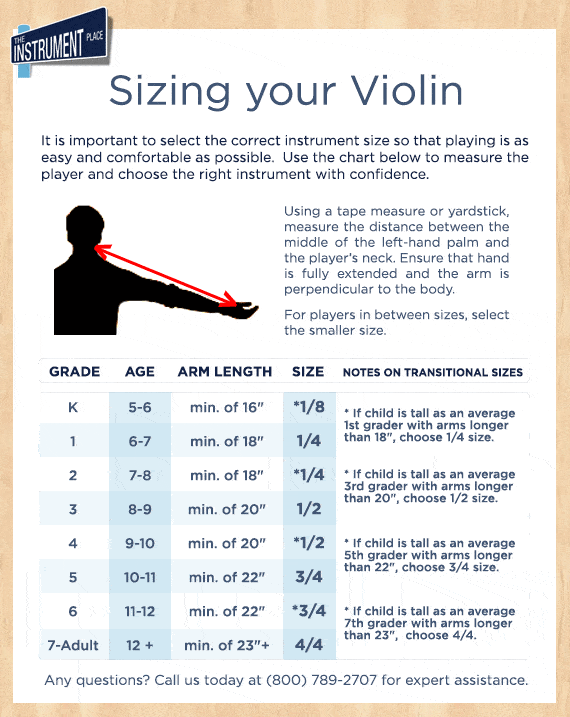How to Choose the Violin Size for a Child: Expert Guide for Parents
Choosing the correct size violin for a child can make or break their musical journey. A violin that’s too big feels heavy, awkward, and discouraging. One that’s too small may limit technique and cause frustration. The good news? With the right measurements and a little guidance, parents can confidently pick a violin that helps their child thrive.
In this guide, we’ll cover everything you need to know—from violin sizes and measuring methods to practical tips and expert advice.
Understanding Why Violin Size Matters
The Role of Comfort and Playability
Learning the violin requires balance, coordination, and precision. If the instrument is too large, the child will strain to reach notes, making it harder to play comfortably.
Preventing Bad Posture and Injuries
Using an oversized violin often forces awkward arm and wrist positions. Over time, this may lead to tension, discomfort, and even injury.
Encouraging Musical Progress
When a child feels at ease holding their violin, they can focus on technique and expression instead of struggling with size. Correct sizing builds confidence and joy in playing.
Standard Violin Sizes for Children
Violins come in fractional sizes, with 4/4 (full size) being the largest and 1/16 the smallest.
Overview of Fractional Sizes
The common child-friendly violin sizes include:
1/16 – youngest beginners (ages 3–4)
1/10 – ages 4–5
1/8 – ages 5–6
1/4 – ages 6–7
1/2 – ages 7–9
3/4 – ages 9–11
4/4 (full size) – ages 11+ or older children with longer arms
Typical Age Ranges for Each Size
While age is a starting point, it’s not always reliable. Some 9-year-olds may already need a full-size violin, while others remain comfortable with a 3/4.
Exceptions to the “Age Rule”
Height, arm length, and finger reach matter more than birthdays. Always measure before choosing.
Measuring a Child for the Right Violin Size
Arm Length Measurement Method
Have your child extend their left arm fully to the side. Measure from the neck to the middle of the palm. Use this number to determine the best violin size.
Shoulder-to-Wrist Measurement Method
Another method is measuring from the shoulder to the wrist crease. This often provides a slightly smaller but more comfortable size.
Trial Fitting at a Music Store
If possible, let your child try different violins. A well-fitted violin should allow the fingers to comfortably wrap around the scroll without strain.
Signs the Violin is Too Big or Too Small
Problems with Oversized Violins
Struggling to reach higher notes
Awkward wrist bending
Heavy instrument causing fatigue
Struggles with Undersized Violins
Limited finger space for proper positioning
Child quickly outgrows the instrument
Restricted sound quality
Tips for Parents When Selecting a Violin
Renting vs. Buying for Beginners
Renting is often a smart choice for young learners. Children outgrow violins quickly, and rentals allow easy size upgrades.
Consulting with a Violin Teacher
Before purchasing, ask your child’s music teacher for input. Teachers have experience spotting size mismatches.
Importance of Proper Setup
Accessories like the shoulder rest and chin rest can dramatically improve comfort and playability.
Frequently Asked Questions
Q1: How often should a child’s violin size be rechecked?
👉 At least once a year, or sooner if your child experiences discomfort.
Q2: Can a child play a bigger violin to “grow into it”?
👉 No, this can cause bad posture and discourage learning. Always choose the correct size now.
Q3: Should beginners rent or buy their first violin?
👉 Renting is usually best for fast-growing children, while buying may suit older beginners.
Q4: What happens if the violin is the wrong size?
👉 It can lead to frustration, poor technique, and even physical strain.
Q5: How do I know if my child is ready for a bigger violin?
👉 If their fingers easily wrap around the scroll and the instrument feels light, they may be ready.
Q6: What’s the difference between a 3/4 violin and a full-size violin?
👉 A 3/4 violin is slightly smaller and lighter, designed for younger players with shorter arms.
Conclusion: Helping Your Child Start Their Violin Journey
Choosing the correct size violin for a child ensures comfort, prevents injury, and builds a strong foundation for musical growth. By measuring properly, consulting a teacher, and considering rental options, parents can make confident decisions. With the right instrument in hand, your child’s violin journey will be joyful, inspiring, and filled with progress.
